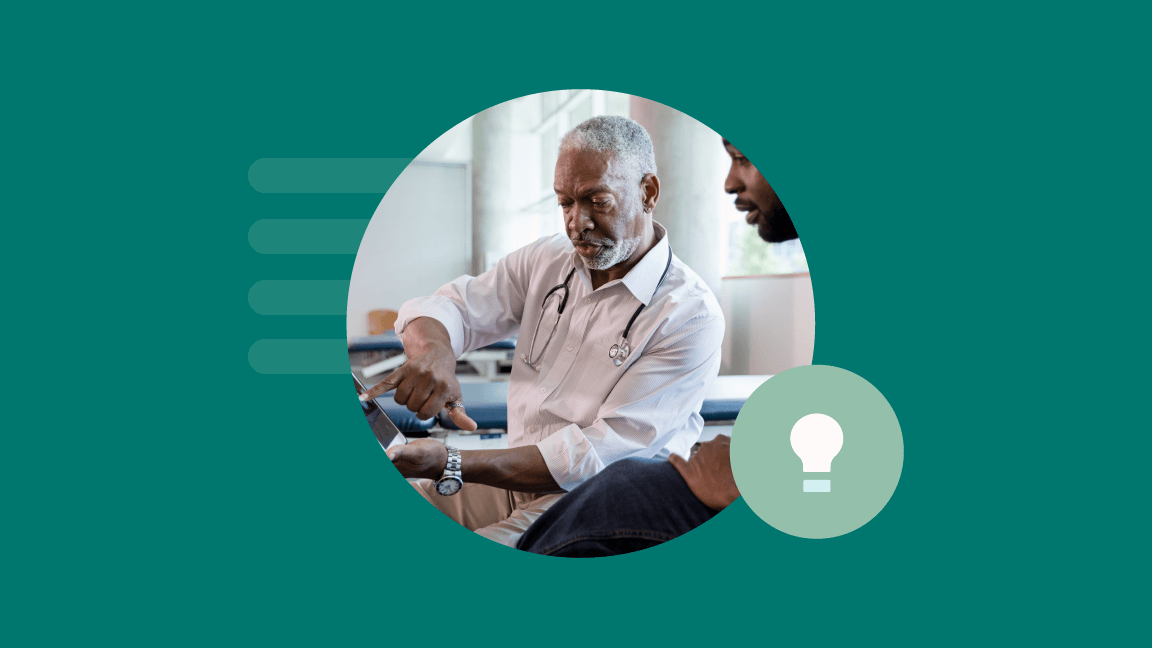Patient outcomes is always a hot topic in outpatient rehab therapy—it’s at the heart of why therapists do their work! But using access and data to improve outcomes takes time and a lot of strategizing.
If you’re unsure of where to start, this post is for you. When it comes to developing high-quality, evidence-based care, clinics first need to focus on who can access that care, and how they can refine processes to improve the patient experience. Let’s dive in.
Improving patient access to care
Patient access to care is a major concern for the outpatient rehab therapy industry, particularly the topic of direct access to care. Research on the value of direct access for PT services could help change healthcare law. Already, 20 states have passed direct access laws for PT services, but direct access laws for OTs and SLPs are less common.
Regardless of your state’s laws, you can still make your services more accessible to existing patients and new referrals with telehealth. Telehealth offers a variety of benefits, many of which clinics, patients, and payers experienced for the first time during COVID-19. Now, payers are more likely to cover the service, patients want it, and clinics can use it to expand their patient offerings. The only remaining barriers to telehealth are technological (mainly, internet and computer access), making it a highly accessible option for patient visits.
Besides telehealth, access to care can also be improved with the following processes:
- Online scheduling: Online scheduling is convenient for providers and patients—especially so for patients with busy schedules. While every system is different, BetterHealthcare’s integration with Insight EMR allows patients to see available in-person and telehealth appointments via the clinic’s location page on BetterHealthcare. Once the patient completes the booking flow, the clinic’s schedule in Insight will be automatically updated. The front desk then only has to review and approve the information, and the patient will receive an email or text confirmation of their booked appointment.
- Patient marketing and resources: Patients won’t know to access your service unless they know what you’re offering. While you may be in a state that doesn’t allow direct access, you can still share and market useful resources that promote your practice. The benefit is two-fold: you can increase awareness around the value of outpatient rehab therapy, and you can raise awareness of your organization, which will impact referrals and new patients, too.
- Online new patient intake: If you live in a state with direct access, allowing new patients to request an evaluation online can greatly increase access to your services. For one thing, the patient isn’t limited to clinic hours to speak to someone about an appointment. Plus, it’s often quicker and easier for both the clinic and the patient. With the right integration, patient information can be automatically synced within your clinic system.
Collecting clinic data: more than just patient outcomes
We’ve talked about collecting outcomes in the past, and how data illustrates the value of quality care and helps clinics identify trends to improve processes.
Patient outcomes are the most common data collected. But there are other data points you can focus on that may help smooth out clinic processes, refine your technology, and reveal your most effective patient-facing services.
- Patient engagement performance metrics: Patient engagement is a critical component of your care, but how effective are your engagement strategies? By tracking strategy performance, you can determine if your patients follow through with home exercises, stay engaged in your care, and illuminate gaps on where you can improve. Every clinic will have different engagement strategies, which means tracking related data will depend on what your clinic offers. Here are some ideas on where to start:
- How often do patients log in to your home exercise program software and complete exercises?
- Does your engagement software, like telehealth, help patients complete their plan of care faster?
- Does your appointment reminder system help minimize missed, late, or no-show appointments?
- Using MIPS or a net promoter score (NPS), are your patients reporting high satisfaction with your care and engagement strategies?
- Workflow trends: Depending on your clinic’s software, you may have some built-in reporting features that can help you identify trends and track workflow data. Some report examples that Clinicient’s Insight offers include:
- Claims acceptance and denial rate to track billing optimizations
- Active patients with no appointments to track front desk or scheduler optimizations
- Incomplete charts, documentation revisions, or unsigned notes to track therapist documentation optimizations
- Technology performance: Your clinic’s technology can also impact workflows and illuminate efficiency gaps. Consider evaluating your clinic software annually to ensure your organization stays current with patient needs and healthcare IT’s evolution. Some examples of how to track software performance include:
- Documentation efficiency for EMR software: Review data on how often notes are revised and when therapists are completing notes (i.e., on the floor or after hours).
- Automation efficiency: Review data showing if automations streamline administrative processes or create more work for your team.
- Interoperability between systems: Review how well your various systems communicate with each other and sync data, and how user-friendly and accessible those systems are to staff.
How it’s all connected…
Focusing on access to care and data collection at your clinic can help your team prioritize the processes that lead to desirable patient outcomes. As your clinic becomes more accessible, you’ll see and treat more patients. And as you smooth out clinic processes, your team can spend more time with patients, further improving the patient’s engagement in their plan of care and their overall recovery outcome. While all of these components may seem to work independently of each other, they are all connected to an improved patient experience and improved outcomes.
If you’re eager to expand your clinic’s access, consider expanding your services with telehealth through BetterAccess, powered by BetterHealthcare. Clinicient’s Insight EMR offers clinics a seamless integration between the two systems for new patient intake, patient self-scheduling, and telehealth. To learn more, request a free, no-obligations telehealth demo today.




Comments